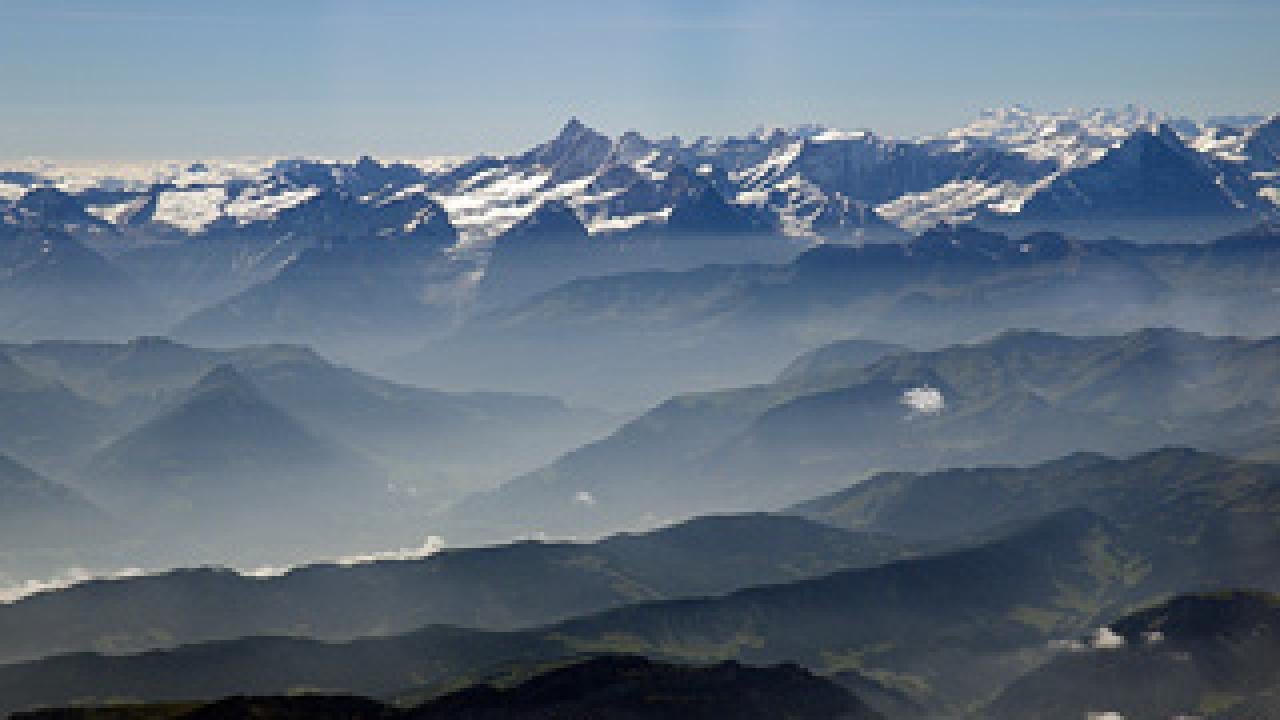A study of the abrupt retreat of mountain glaciers in the European Alps in the 1860s has uncovered strong evidence that absorption of sunlight in snow by soot, or black carbon, released by a rapidly industrializing Europe was to blame.
The study, led by NASA and co-authored by a researcher at the University of California, Davis, is published Sept. 3 in the journal Proceedings of the National Academy of Sciences.
The research may help to resolve a longstanding scientific debate over when the "Little Ice Age" actually ended and why the Alps' glaciers retreated decades before global temperatures started increasing again. The Little Ice Age was a cooling period roughly between the 14th and 19th centuries, though scientists do not agree on when it specifically began and ended.
“We think we’ve solved the puzzle of why the glaciers in the Alps retreated so quickly,” said Richard A. (Tony) VanCuren, an air particles expert with the UC Davis Air Quality Research Center.
The results show that human influence on glaciers reaches back to well before industrial temperature increases.
"Before now, most scientists have believed the end of the Little Ice Age in the 1800s was due to a natural climatic shift, distinct and well before emissions of carbon dioxide reached levels that could start to influence climate and glaciers in the 20th century,” said lead author Thomas Painter, a snow and ice scientist at NASA's Jet Propulsion Laboratory in Pasadena, Calif.
Glacier records in the European Alps date back to the 1500s, while records of weather conditions date back to the late 1700s. Between 1860 and 1930, large valley glaciers in the Alps abruptly retreated an average of nearly 0.6 mile (1 kilometer) while temperatures in Europe dropped nearly 1.8 degrees Fahrenheit (1 degree Celsius). Glaciologists and climatologists have been challenged in reconciling this apparent conflict between the climate and glacier records.
To help scientists understand what was driving the glacier retreat, the scientists turned to history.
In the decades following the 1850s, Europe was undergoing a powerful economic and atmospheric transformation, spurred by industrialization. Residents, transportation, and, perhaps most importantly, industry in Western Europe began burning coal in earnest, spewing huge quantities of black carbon and other dark particles into the atmosphere.
For this study, VanCuren analyzed air pollution data from the coal, steel and rail industries in Europe going back to the late 19th century to help determine when and where pollutants were deposited in the glaciers.
Black carbon particles are the strongest absorber of sunlight by weight. When these particles settle on snow, they darken the surface and cause it to melt faster, revealing glacier ice earlier in the year.
Concentrations of black carbon are highest at lower altitudes, meaning that more will settle on the lower portions of mountain glaciers, in their so-called “ablation zone,” where temperatures are higher and melting occurs.
To figure out how much black carbon was in the atmosphere and the snow when the Alps glaciers began to retreat, the researchers turned to ice cores drilled from high up on several European mountain glaciers. Using levels of carbon particles trapped in the ice core layers, and taking into consideration modern observations of how pollutants are distributed in the Alps, they were able to estimate how much black carbon would have deposited on the glaciers’ lower melting surfaces.
The research team then ran computer models of glacier behavior, starting with recorded weather conditions and adding the new black carbon data. By adding the impact of black carbon, the simulated glacier mass loss and timing were finally consistent with the historic record of glacial retreat, despite the cooling that occurred during that time period.
VanCuren said the deposition of soot onto glaciers is not unique to the Alps.
“It’s an ongoing concern — for the melting of the glaciers in the Himalayas, for reduced duration of the snowpack in the Sierra Nevada and Rocky Mountains and the impact that has on water supplies, as well as the more rapid melting of ice in the Arctic and in Greenland,” he said. “We’ve accepted the idea that humans have been modifying the atmosphere in terms of carbon dioxide, but the effect of soot has not been very well dealt with in terms of its long-term effect.”
Other participating institutions include the Cooperative Institute for Research and Environmental Sciences at the University of Colorado Boulder; the University of Michigan, Ann Arbor; and the University of Innsbruck, Austria.
Media Resources
Kat Kerlin, Research news (emphasis on environmental sciences), 530-750-9195, kekerlin@ucdavis.edu
Richard (Tony) VanCuren, UC Davis Air Quality Research Center, ravancuren@ucdavis.edu
